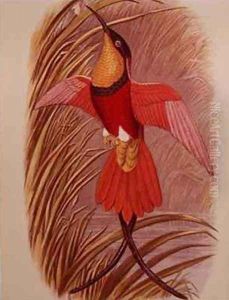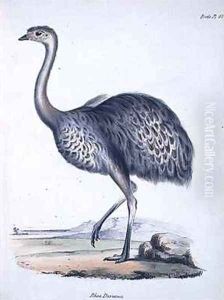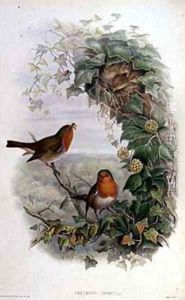John Gould Paintings
John Gould was an English ornithologist and bird artist. He was born on September 14, 1804, in Lyme Regis, Dorset, England. Gould's father was a gardener, and this early exposure to nature and wildlife sparked his interest in birds and the natural world. In 1827, he became the curator at the museum of the Zoological Society of London, where he was able to study a variety of bird species.
Gould's work in ornithology was extensive, and he is best known for his major works including 'The Birds of Europe' (1832–37) and 'The Birds of Australia' (1840–48). These works consisted of a series of books that were remarkable for their beautiful hand-colored lithographic plates, illustrating the birds in vivid detail. He employed talented artists, including his wife, Elizabeth Gould, who was responsible for a large number of illustrations before her early death in 1841.
Though Gould had no formal scientific training, his contribution to the field of ornithology was significant. He described many bird species for the first time, and his books played a key role in the study and classification of birds. Gould's work also had a substantial influence on Charles Darwin, who met him several times and used Gould's identification of bird specimens collected during the voyage of the HMS Beagle in his own evolutionary studies.
John Gould continued to work on ornithological publications throughout his life, producing a total of about 3,000 plates in 18 volumes. He traveled extensively, not only to Australia but also to Asia and the Americas, to observe birds in their natural habitats. His passion for ornithology and his entrepreneurial spirit made him a respected figure in Victorian scientific circles.
Gould died on February 3, 1881, in London. His legacy endures through his detailed and artistic representations of birds, which remain valuable to both ornithologists and art lovers. Gould's work provided a comprehensive record of bird species that has been used for scientific reference as well as artistic inspiration for generations.








































